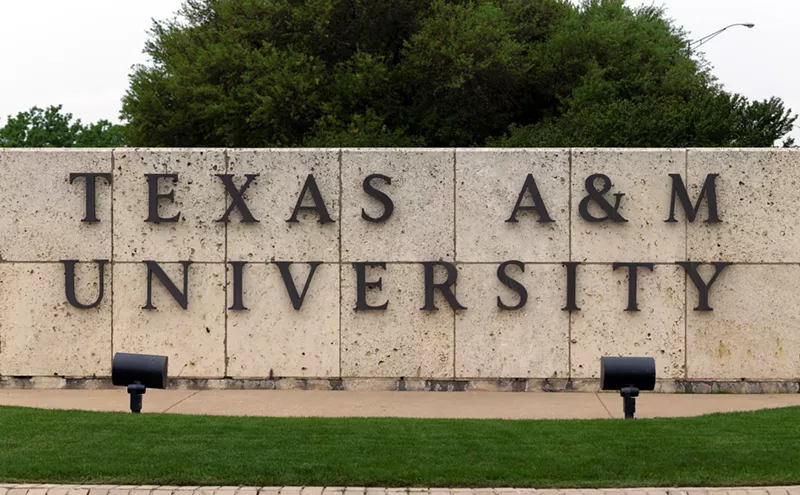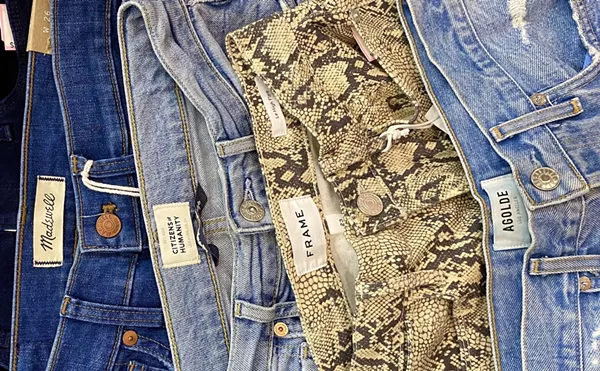These three men, and dozens more who shared the field with them during the 1970s and '80s, are living legends, reminders of a time when Tom Landry and his hat strolled the Texas Stadium sidelines and an oilman named Jerry Jones was spinning pigskin dreams in Arkansas.
These players devoted their professional lives to the Cowboys and its owners, and they sacrificed their bodies to a game that paid them well, but nowhere near the millions that players take home today. They did not sprint from the field toward retirement--in some cases, they hobbled, racked with injuries to their necks and knees, to their backs and ankles, to every bone in their battered bodies.
They may have played in another decade, but their pain exists very much to this day. And for their suffering, 47 former Cowboys who played for Dallas between '81 and '87, the frustrating years when the Super Bowl was just out of reach, have been receiving workers compensation benefits--benefits they earned, and benefits they may soon have to fight to keep. That's because Jerry Jones doesn't believe he has to live up to the agreement of his predecessors.
In 1982, when Clint Murchison and his family owned the Cowboys, the team purchased workers compensation insurance to help pay "comp" claims filed by players injured in the line of duty. Rushmore Insurance Company now claims that since 1990, it has paid more than $1 million in claims for these ex-Cowboys, moneys that the company says Jones should have repaid Rushmore. Some of the players, including Hall of Fame heroes Tony Dorsett and Randy White, have collected a few hundred bucks; others, including local legends Harvey Martin and Bob Breunig, have received thousands for their job-related injuries.
These players have collected because their NFL players' contracts guarantee them workers comp benefits during and after their playing days. They have collected because the players' union long ago fought for their rights, battling team owners who even now try to get out of their legal obligations by taking players to court. Most importantly, they have collected because workers compensation has been the law for almost a century.
But now, Rushmore is in Dallas federal court alleging that Jones, who bought the Cowboys in February 1989, has refused to abide by his obligation to reimburse Rushmore for covering these former players. In a suit filed last January, Rushmore alleges that the Cowboys owe more than $750,000 to Rushmore for claims paid to the likes of Breunig, White, Dorsett, and other heroes and has-beens who want to be reimbursed for injuries suffered while wearing the silver and blue.
But Jones insists that when he bought the team in 1989, he purchased only the Dallas Cowboys, not its old problems and obligations. Jones claims the Cowboys' deal with Rushmore died long before he bought the team. The Cowboys' owner doesn't want to pay Rushmore a nickel--even though U.S. District Judge Jorge Solis has already ordered the Cowboys to fork over the money in a default judgment.
Rushmore's complaint against the Dallas Cowboys offers more fuel to those who say Jones will do anything to keep from paying former players workers compensation, especially to those who left the team before he purchased it. In 1994, Jones even sued 16 former Cowboys for comp claims, demanding they pay him a million dollars--even though several of these ex-Cowboys were nearly broke.
"Jerry Jones doesn't think players deserve workers comp," says Richard Berthelsen, general counsel for the Washington, D.C.-based National Football League Players Association. "But football players don't give up their rights as Americans when they become NFL players."
Jones' attorneys say that's ridiculous. They say Jones lives up to his obligations--Rushmore just isn't one of them.
The Rushmore lawsuit is a rather complicated matter that features everything from interpretations of business law to brawls between attorneys to bungling in the Cowboys front office.
But at its core is the simple issue of how much a football player's pain is worth, and who will pay for it.
Two decades ago, most football players didn't file for workers compensation even though they had a right to collect it. They thought if they filed a claim against their former team, they'd be excommunicated--no more reunion invites, no more coasting on the glory days.
Owners and coaches told players that there was a difference between pain and injury, and that they were being paid a good wage to play a dangerous sport--even though in 1981, the average NFL salary was $90,000, or $660,000 less than the average player makes today. Players left the game as cripples and addicts, and owners simply said, Hey, you knew what you were getting into.
"And players sort of believed that," says Pete Gent, former Cowboys wide receiver and the author of 1973's North Dallas Forty, which vividly chronicles the good ol' shoot-'em-up-stitch-'em-up days. "They were just kids. They're holding on from week to week, and they don't want to make waves. You file for workers comp, you piss the team off."
Though players were entitled to workers comp, the National Football League Players Association didn't start taking players' cases until 1979, when the NFLPA formed a national panel of workers comp attorneys in every NFL city. Appropriately enough, the panel was formed after three former Cowboys--including tight end Pettis Norman--filed suit against the team after injuries left them hobbled.
Norman, now a Dallas businessman, brought a negligence suit against the Cowboys because team doctors never operated on his injured knee. They merely injected him, sometimes twice a week, with cortisone, which eventually degenerated the tissue in his knee and forced him to have it replaced.
"We were all young and naive and thought people who really had a heart would tell you what was wrong with you," says Norman, whose case was dismissed on a technicality. "We were up against people who were seasoned professionals and had doctors who would tell them what they wanted to hear. But you were affected for the rest of your life."
The players were all represented by Dallas attorney Frank Hernandez, who became so angered by a local judge's ruling against his clients, he went to Washington, D.C., to speak to NFLPA executive director Ed Garvey. Hernandez says that after a "heated argument" about players' rights, the NFLPA finally formed its workers comp panel, which is charged with informing players and their families of their right to workers compensation.
By the early 1980s, players began filing comp claims, even though the claims were minimal. It wasn't until the late 1980s, when players discovered they could get reimbursement for "cumulative trauma"--meaning latent injuries that might be discovered in the future--did they begin to line up. Now, the NFLPA estimates each club receives two to five claims a year.
In 1982, Clint Murchison purchased workers compensation with Insurance Company of North America (INA), which later became Cigna. The team also signed a deal with the Bermuda-based Rushmore Insurance Company to reinsure the policy with INA, which reduced the team's premiums and its financial risk. The result, says one workers comp attorney, was "like one bookie laying bets with another bookie to cover his losses."
The agreement with Rushmore worked like this: Cowboys who played from 1981 to '87, if injured, submitted a workers comp claim to the NFLPA, and the union then handed it over to the team, which in turn sent it to Cigna. The team could contest the player's claim (as Jones often would in later years), but if Cigna paid the claim, the insurance company was then reimbursed by Rushmore for the full amount of the claim. Rushmore then collected the first $50,000 of the claim from the Cowboys--think of it as a deductible--and footed the rest of the bill.
Supposedly, Rushmore would make its money from premiums the Cowboys paid to Cigna. "The theory [when the deal was signed] was, there shouldn't be very many claims," says Rushmore president Alan Symons, "because you look after your players as though they're family."
But the advent of free agency broke up that dysfunctional family, and the rising costs of doing business in pro sports quickly proved Symons wrong. The arrangement turned into a "bad deal for everybody," says Rushmore's attorney, Monica Luebker, who adds that Rushmore began losing money when more players began filing claims.
According to Rushmore's records, filed in court, some of the 47 players have pocketed more than $50,000 in workers comp money for injuries to "multiple body parts" or for "stress and strain of occupation." These include Harvey Martin ($183,000), Bob Breunig ($87,817), Billy Joe DuPree ($87,758), Doug Donley ($64,017), and John Fitzgerald ($68,759).
And they all began receiving benefits during Jones' ownership, claiming they sustained cumulative trauma during their years playing for the team.
The list of players collecting lesser amounts includes such former Cowboy greats as Randy White ($1,978) and Tony Dorsett ($1,518), but the names of men who spent only a season or two with the Cowboys also appear.
Linebacker Guy Brown, who played for the Cowboys from 1977 to '82, pinched a nerve in his neck during a playoff game in 1982 and was paralyzed for about 10 seconds. After the season, Brown was examined by team doctors and was found to have a congenital defect--smaller vertebrae in his neck--that could cause permanent paralysis if he continued playing. In the mid-'80s, Brown filed workers comp and was awarded $48,000, plus medical expenses for the next 10 years. Cigna paid Brown the $48,000, and Rushmore reimbursed Cigna, expecting the Cowboys to pay the money back as part of its deductible. The team didn't.
Symons says that Rushmore first contacted the Cowboys about settling its debt in March 1994, when he sent a letter demanding payment of $587,099. In his deposition, Symons explains that Rushmore didn't solicit payment earlier because he didn't think the amount was that out-of-hand, especially for insurance costs.
The Cowboys' attorneys say Symons' reasoning is flawed. "His explanation may make economic sense," says James Bullock, "but no responsible industry lets contracts go unenforced for that amount of time."
Besides, Bullock argues, Jones isn't even responsible for the Rushmore deal. In a prepared statement, Bullock and attorney Pat Wadlington say that when the Murchisons sold the team to H.R. "Bum" Bright in 1984, the Rushmore agreement "was not inherited."
The attorneys claim that Bright bought only the Murchisons' assets, not the family's stock in the Cowboys--meaning Bright didn't inherit every deal the Murchisons entered into, only the ones mentioned in their 1984 purchase agreement. INA is indeed mentioned in the thick document--but Rushmore is not. The lawyers contend there was no way that Jerry Jones, who purchased the team from Bright, had any contractual relationship with Rushmore since Jones only bought what Bright owned.
Simply put, the Cowboys are arguing that Rushmore has sued the wrong party. They say the insurance company should be going after the Murchisons, not Jerry Jones.
Jerry Jones has already lost this lawsuit once.
On April 4, U.S. District Judge Jorge Solis ordered the Cowboys to pay Rushmore more than $1.1 million because the Cowboys failed to respond to the lawsuit on time by February 26.
The team did respond, but only after Solis handed down the default judgment, and then Cowboys officials contended they had no idea the team had been sued in the first place.
Which Rushmore claims is impossible.
According to court documents, the Cowboys were served with Rushmore's court complaint on February 6. Court files include an affidavit from process server Lee Russell, who says he delivered the papers to Robert Nunez, the team's chief financial officer.
In his affidavit, Nunez claims he has "no recollection whatsoever" of getting the papers and that he heard of the lawsuit only after learning of the default judgment. Nunez says the Rushmore papers were discovered in a file pertaining to another lawsuit.
Cowboys vice president of legal operations and the team owner's son, Jerry Jones Jr., swears in his affidavit that he did not know of the suit although he did hire attorneys Bullock and Wadlington to represent the team in early February in the Rushmore matter. He recalls telling the attorneys to act only when served with Rushmore's complaint.
It appears that the Cowboys are trying to use Nunez's sloppiness and Jones' inaction as an excuse for getting the judge to throw out his hefty award. In court documents, the lawyers insist that the team's lack of response to the lawsuit was not intentional, but rather "the result of mistake, inadvertence, or excusable neglect."
To which Rushmore attorney Luebker replies: "They don't want to live up to their agreement, and now they're looking for a technicality to get out."
Luebker expects Solis to rule on whether to vacate the default judgment in the next few weeks, though both parties keep filing motions asking for a continuance. Should Solis throw out his previous ruling, this case is likely to continue for months.
Still, a larger question remains: If the Cowboys don't want to pay Rushmore, will Rushmore have to keep reimbursing Cigna? If the court rules no, Rushmore will not have to pay out one more penny. The players would then have to refile their claims with the team, and Jones could contest most of them. After all, he's done so in the past. Time and again.
His attorneys, in their prepared statement, insist that "Jerry Jones and the Dallas Cowboys Football Club, Ltd. respect the right of every current and former player of the Dallas Cowboys Football Team to receive workers compensation payments for legitimate injuries which are suffered as a result of their carrying out their duties to the Football Club."
But Tony Hill might not agree. Or John Dutton. Or forgotten Cowboys like Scott Ankrom.
"Jerry's trying to take away their compensation benefits," says NFLPA attorney John Collins. "I mean, there's some pretty tough employers in this state, and no one's ever tried to do that."
When Tex Schramm hears the list of some of the players who have received workers compensation from Rushmore, he can't contain his laughter.
"That's a hilarious list," says the former president and general manager of the Cowboys. "I mean, you don't see Staubach's name on there."
The way Schramm recalls it, during his tenure with the Dallas Cowboys--which dates all the way back to the club's inception in 1960--not one single former player ever asked him for money to take care of old football injuries. "The players just didn't do that," says Schramm. "We had a reunion every year where all the players would come back, and some would be limping and whatever, and they'd be laughing about it. That was the name of the game."
Of course, Rushmore began paying out these claims after Jones had bought the team and Schramm and Tom Landry were unceremoniously pushed out the door like old luggage. Schramm says he doesn't even remember the Rushmore name.
He is galled by the idea of a team paying workers compensation to its players. Like Jones, Schramm believes football players assume the risk of injury the moment they hit the field. He is shocked that Rushmore has paid Jones, White, even Dorsett--but he is more shocked that these players would even approach the team for what he calls "free money."
"I don't think Randy White could look me in the eye and ask me for money," Schramm says, a tone of disgust in his voice.
Jerry Jones may have run Schramm out of Valley Ranch, but Tex is his kind of guy.
The Rushmore suit is not the first time Jones has fought paying comp claims by former players--especially those who played before Jones bought the team.
In January 1994, Jones sued John Dutton, Tony Hill, Doug Cosbie, and 13 other ex-Cowboys, claiming they owed him nearly $1 million--money they had been paid through workers comp claims and other insurance settlements by Bum Bright, not Jones. Nonetheless, Jones claimed that the players had already been compensated through their salaries--meaning they had been paid while sitting on the bench, nursing wounds.
"He said they were double-dipping," says Collins, who represented former Cowboy wide receiver Scott Ankrom in a separate lawsuit filed by Jones in 1994. "It's Jerry's favorite phrase, even though he really doesn't understand what it means."
At the time, the players, many of whom were out of work and nearly bankrupt, were galled by Jones' actions. All-Pro lineman Dutton told Jim Dent, author of King of the Cowboys: The Life and Times of Jerry Jones, that Jones was "trying to steal from his former players."
"What an asshole Jerry Jones is," Dutton said.
Curiously, Jones didn't go after Hall of Fame Cowboys who had also collected workers compensation, namely Randy White and Tony Dorsett.
But Jones lost the fight: A California judge ruled that Jones had no right to the players' compensation money--and ordered him to pay an extra 10 percent to the players, in addition to attorneys' fees.
By suing a bunch of forgotten Cowboys for a million bucks--at a time when the franchise was worth an estimated $190 million--Jones looked like a cold businessman quick to spit on the Cowboys' history. Essentially, he admitted that he didn't feel responsible for what had happened before he owned the team.
"He's been trying to find every way he can to avoid paying workers comp claims," Collins says. "He's just a chickenshit, and here's the reason why: Every other team in the league pays legitimate comp claims. Sure, there are some contested cases, but at least with the claims I've handled, Jerry's contested every single one, no matter the validity of the claim, and that's just nonsense."
Ankrom's case sheds insight into the way the Cowboys currently operate regarding workers comp claims. Ankrom, who injured his left knee while playing for the Cowboys in 1989, the first year Jones owned the team, claimed $26,500 in compensation. The team and Gulf Insurance Co., which became the club's insurance carrier under Jones, didn't think he was due the money and convinced a Dallas district judge to rule in their favor.
But the Dallas Court of Appeals overturned the ruling in March 1995 and gave Ankrom his money. Jones ultimately took the case to the Texas Supreme Court, but the court refused to hear it.
Jones keeps workers comp lawyers busy even now: Currently, Collins is representing former Cowboy Mike Ulufale before the Texas Workers Compensation Board. The defensive tackle played last year, but injured his neck during training camp this summer. The Cowboys cut him and tore up his contract--and nullified his workers comp rights, which Collins says is against the law.
Pete Gent, who has made a living out of writing about players' pain, isn't surprised by any of this--the Rushmore lawsuit, the Ulufale case, Jones' 1994 lawsuit against the 16 former Cowboys. To him, it's the same ol' same ol', the price of doing business between the hash marks.
"I've always believed there's an attitude toward ball players that they deserve to get hurt," he says. "And whoever thinks that way doesn't have the faintest idea how we feel.












